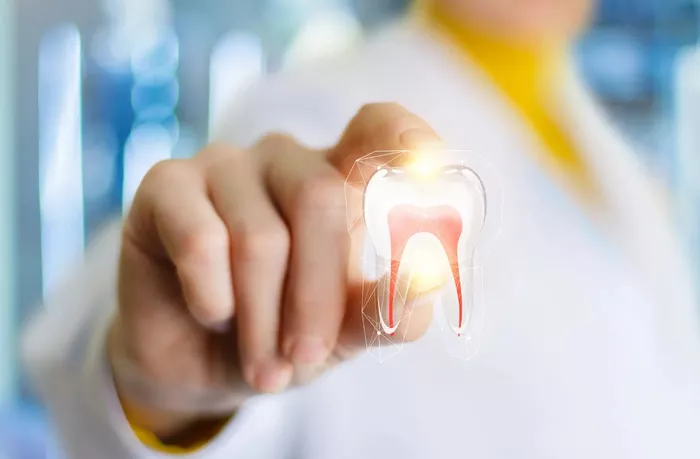Scientists have developed a revolutionary dental implant that actually “grows” into the gum and integrates with existing nerves, closely replicating the look, feel, and function of a real tooth. Unlike traditional implants, this new design is easier to install and avoids bone drilling, offering a gentler solution for tooth replacement.
Researchers at Tufts University’s School of Dental Medicine and School of Medicine created a “smart” implant featuring a biodegradable outer layer infused with stem cells and a protein that encourages these cells to develop into nerve tissue.
“Natural teeth connect to the jawbone via soft tissue rich in nerves, which provide sensory feedback essential for detecting pressure, texture, and coordinating chewing and speech,” explained senior author Jake Jinkun Chen, a professor of periodontology. “Conventional implants lack this sensory connection.”
Standard dental implants consist of ceramic crowns attached to titanium screws anchored in the jawbone. Though effective for long-term replacement, their installation involves invasive surgery that can damage nerves and always results in a foreign-feeling tooth.
In contrast, the new implant starts smaller than the original tooth and has a coating of rubber nanofibers that expand as the layer biodegrades, anchoring the implant within the soft tissue lining the socket—not the bone. Over time, it grows to fill the gap left by the missing tooth.
“Imaging showed a clear space between the implant and the bone, indicating integration through soft tissue rather than bone fusion,” said Chen.
As healing progresses, the implant reestablishes nerve connections, restoring communication between the mouth and brain. This allows the artificial tooth to sense food texture, temperature, and assist in speech, much like a natural tooth.
“This innovative implant and its minimally invasive placement could reconnect nerves, enabling the implant to ‘communicate’ with the brain like a real tooth,” Chen said. “This breakthrough might also revolutionize other bone implants, such as those used in hip replacements or fracture repairs.”
Although still in early stages, the implant has been successfully tested in rodents, showing biocompatibility and functioning like normal teeth six weeks after surgery. Researchers will next analyze the rodents’ brain activity to confirm how effectively the implant’s nerves integrate with existing pathways.
Future plans include trials on larger groups of teeth in animal models, followed by human clinical trials.
While incremental progress has been made in bone regeneration—especially in Japan—the ability to grow fully functional new teeth to replace lost ones remains a challenge that scientists are actively pursuing. This new implant represents a major step toward that goal.
Related topics

